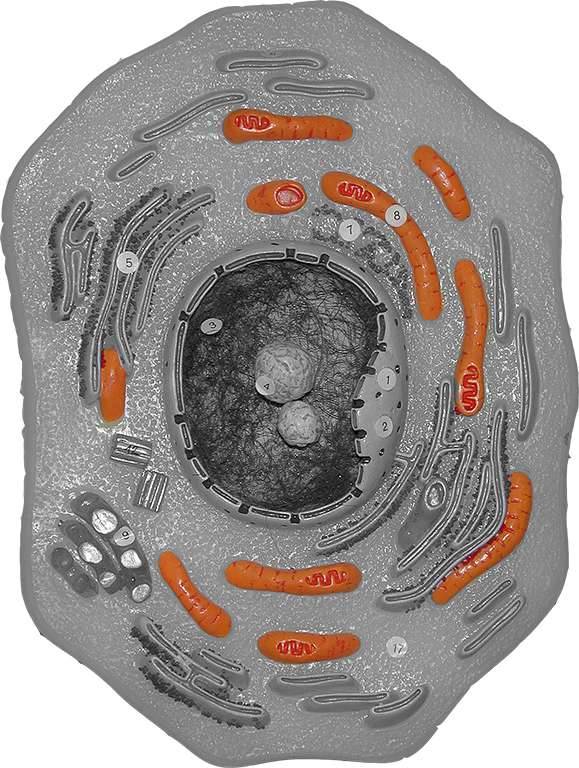Mitochondrion
|
|
The mitochondrion (mitochondria, pl.) is often called the power-house of the cell. It is the cell organelle responsible for producing the great majority of ATP used by the cell. The mitochondrion is an oblong, cigar-shaped organelle. It has a double membrane structure. The inner membrane, called the cristae membrane is highly folded. This membrane is packed with the components of the electron transport chain. Energy derived from the bonds of organic molecules, notably glucose, is converted into stored energy in ATP by these electron transport chain components.
Interestingly, the mitochondrion is thought to have evolved from a bacterium that invaded another cell. This symbiosis eventually led to the mitochondrion we know about today. The mitochondrion has its own circular DNA chromosome, just like bacteria. The mitochondrion also has its own ribosomes which are identical to bacterial ribosomes, not eukaryotic cytoplasmic ribosomes. Because mitochondria have their own genetic information they have the ability to self replicate. They replicate to meet the energy needs of the tissue. So tissues that are metabolically active will have more mitochondria than tissues that are not metabolically active. Muscles cells will have more mitochondria than fat cells. Muscle cells of athletes will have more mitochondria than muscles of couch potatoes.
The mitochondria are highlighted in orange in the diagram to the right.





